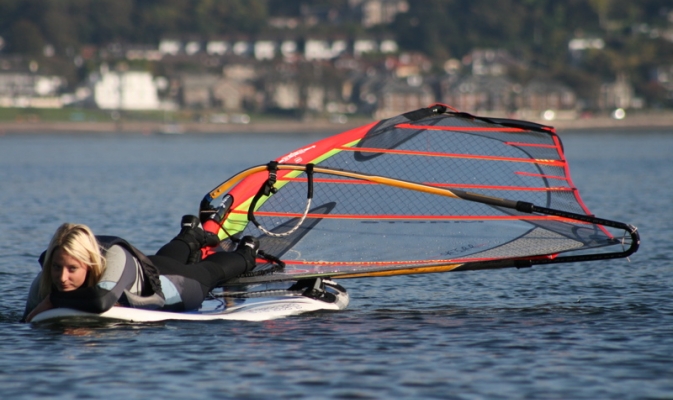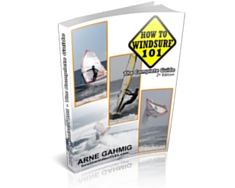It can happen to anyone. It has happened to me more times than I can remember. It is annoying and exhausting, but it can also be dangerous if you don|t know how to get back to shore with the kit. First off there are two very important things to keep in mind:
1. NEVER LEAVE YOUR KIT!
The kit is the only flotation device you have and if you get tired you can just lay on it or hold on to it rather than try to keep your head over water in the waves. Aside from this it also offers more visibility for any rescue services that are looking for you. It is easier to spot a board and sail which may even have bright colors than a person half submerged in the water.
2. SWIM PERPENDICULAR TO THE CURRENT
Obviously we don’t want to go to where the current takes us. However, we are not going to be able to be able to swim against the current. So, what is left? Swim perpendicular to the current. If we swim at 90 degrees to the current we will naturally be dragged downstream, but if we keep swimming across it we will eventually arrive on land.
Beginner gear
Sail pumping
Using the sail to move forwards with no wind at all is a very useful skill to have indeed. Mainly it consists of generating your own wind and then using the physics of the sail to work its magic.This technique is to be used if there is at least a little bit of wind as it is faster than the one below.
Start off by leaning the sail far forwards to the bow and opening the sail. From there pull the whole sail backwards to the stern strongly so that you move the whole mass of air over the board aft. It is important to do this in one energetic motion. What this does is us the mass of air as if it were stationary and we push the board forwards under it with our feet. This will generate a slow movement forwards.Then sheet the sail in so that it is practically in line with the board so that you provide as little wind resistance as possible with it and move it towards the bow again. The board will naturally start to slow down again and when it does we open the sail again to repeat the movement. This way we will advance slowly but surely towards land again.
Lay the boom on stern
This method only really works if there is no wind at all as if there is a little breeze, the wind can blow the sail back into the water and undo our work of putting the boom on the board. This method is also slower than the one mentioned before as soon as there is a little bit of wind.
If the water is shallow enough, we can also walk back to the shore although this method also works in deep waters. However there is a more and a less efficient way to do this. The most efficient way is to lay the boom on to the back of the board. If necessary lover the boom. The idea is to balance it on the board so that it does not touch the water. If it touches the water it will generate resistance and make advancing through the water much more difficult.
Then go to the bow and pull the kit behind you. This works for wading through the water as well as swimming if the water is too deep.
Sinker boards
Having the wind bail on you when you are out on a sinker board is one of the most annoying (and tiring) things that can happen. On top of that, even though the wind disappears, the current in the water will most likely continue, meaning that you will be at the mercy of the currents. This can be a real problem indeed if this current is heading out to sea.
Waterstart position
Usually the wind will not disappear completely meaning that there will still be enough wind available to keep the sail in the air. Here our best option is to lift up the sail and hold the back footstrap while keeping our body as horizontal as possible (for less resistance) in the wake of our movement. This will provide us will a slow yet definite progress back to the beach. Another option is to hold the sail in the air with both hands and put the feet on the board if this is more comfortable for you. It ultimately comes down to preference.
The benefit of holding the position with the feet on the board is that if the wind does pick up a little, even if it is just a gust, it may be enough to lift us up with a waterstart and we can wobble on the board in a sailing position back tot he beach which is a little bit faster that dragging our body through the water even if it is a little bit more tiring.
If the wind does drop completely while we are doing this method we can always fall back on the next method.
Boom on stern
It may be the case that the wind goes away completely so that the sail is not held up.by the wind. Here we lay the boom on the back of the board, trying to keep it out of the water as much as possible so that there is as little drag as possible. Then we stay at the middle of the board and hold the sail in place by holding on to the mast at about 30 cm (1′) above the mast foot. In this position we start swimming back to the shore.






